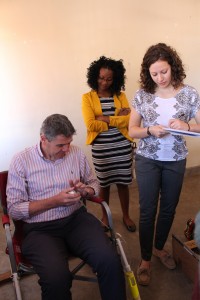
As I am writing this, I am sitting in our living room alone at 2:30 am. We will be leaving in a couple hours, but I cannot sleep. I have too many thoughts swirling through my head and too many emotions in my heart, so I decided to write them down for you.
Throughout the summer, we have been having house meetings. Whenever we find a challenge to living or working together, we sit down and talk it out. These meetings are often difficult and force me to reconsider where I come from on a variety of issues, but tonight’s was only beautiful. We thanked each other for this summer, for the lessons we have learned, and for the experiences we have shared. Tonight, I told you that I am thankful for every single day we have shared together. That is not to say that they have all been good – some days, I have been frustrated. Some days, I have been angry. Some days, I have lashed out. Still, some days, we have laughed until we cried over communication mishaps. Some days, you have taught me skills with the patience of a saint. Some days, you have given me a new perspective and helped me see things from a different direction.
We do not grow, as individuals or as a family, from the easy things. We grow from the challenges, from working to understand each other, from respecting each other, from seeing each other’s perspectives.
So, I thank you. Thank you for all of the challenges. Thank you for the frustrations. Thank you for making me a more patient, understanding person.
Thank you for accepting my mistakes. Thank you for teaching me what is important and what I should let slide. Thank you for helping me grow as a person in ways I could have never imagined.
Thank you for making it hard for me to see the computer screen as I type this because, although I have cried many times this summer, mostly from laughter or excitement, I am finally reduced to a sobbing mountain of tears at 3 in the morning because I am not ready to leave you. Each of you will forever hold a special place in my heart. You are not only my co-workers or my housemates. You are my family. We have lived together, worked together, and grown together. Like any family, we have had our ups and downs, but they have only brought us closer. I am truly thankful for every moment – the easy and the hard – and I cannot imagine this summer without you.
I am glad that I do not know the Chichewa word for goodbye, because that means I can only say “see you”: Tiunana. And of course, from the bottom of my heart, zikomo kwambiri.
With more love than I could possibly express,
Leah




